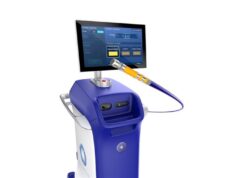The Heart Rhythm Society (HRS), the European Heart Rhythm Association (EHRA) and Asia Pacific Heart Rhythm Society (APHRS), presented, at Heart Rhythm 2013, the “HRS/EHRA/APHRS expert consensus statement on the diagnosis and management of patients with inherited primary arrhythmia syndromes”. The document provides the first comprehensive statement of recommendations on the proper diagnosis and management of patients with inherited primary arrhythmia syndromes.
“The complexity and prevalence of inherited cardiovascular diseases is growing, thereby creating a greater demand for the proper diagnosis and management of patients with these conditions,” said Silvia G Priori, Fondazione Salvatore Maugeri, Department of Molecular Medicine University of Pavia, Pavia, Italy, HRS chairperson.
The consensus statement provides a state of the art review of the field and reports the recommendations of a writing group comprised of international experts. The recommendations summarise the opinions of the expert writing group, based on an extensive literature review as well as their own clinical experience.
The consensus statement is for all healthcare professionals who manage the patient care of individuals who have survived cardiac arrest at a young age, family members of individuals who have died suddenly at a young age with a negative autopsy, patients in whom the diagnosis of an inherited arrhythmia is clinically possible, or young patients with unexplained syncope.
The statement provides the diagnostic risk stratification and management of patients, among others, affected by LQTS and Brugada Syndrome (BrS). Documented for the first time, the statement also includes a consensus of recommendations on the diagnosis, risk stratification, and management of the following arrhythmic diseases and unexplained causes of sudden death/cardiac arrest:
- Catecholaminergic Polymorphic Ventricular Tachycardia (CPVT)
- Short QT Syndrome (SQTS)
- Early Repolarization (ER)
- Progressive Cardiac Conduction Disease (PCCD)
- Unexplained cardiac arrest including Idiopathic Ventricular Fibrillation (VF), Sudden Unexplained Death Syndrome (SUDS), and Sudden Unexplained Death in Infancy (SUDI)
“This document is a great advancement for electrophysiology because it provides one, comprehensive and uniform recommendation on all rare arrhythmia syndromes,” said Arthur A. Wilde, University of Amsterdam, Amsterdam, The Netherlands, EHRA chairperson.
An additional primary recommendation from the expert consensus writing committee is that patients and first-degree relatives with a diagnosed or suspected inherited cardiovascular disease should be evaluated in a dedicated clinic with appropriately trained clinical staff and the resources to provide support to the patient and family members.
The consensus statement has representatives on the writing committee from the American College of Cardiology Foundation (ACCF), the Association for European Pediatric and Congenital Cardiology (AEPC), the American Heart Association (AHA), and the Pediatric and Congenital Electrophysiology Society (PACES). At the time of the release of this document, endorsement by these organisations is pending.
The document will be published simultaneously in HeartRhythm andin EP Europace in autumn2013.









